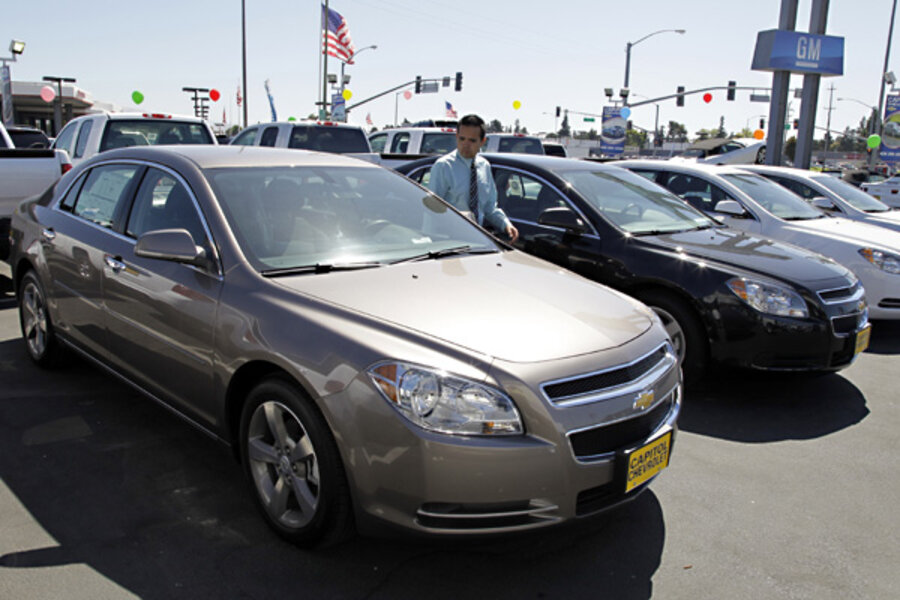Buying a car? Shop for reliability and fuel economy.
Loading...
The last two weeks have focused on appliances. Now, we’re going to shift directions and take a deeper look at automobiles.
Let’s take a look at two hypothetical cars.
You’re looking at a class of cars that, according to the data you’ve researched, get to 150,000 miles pretty reliably before significant problems set in. You drive 25,000 miles per year, so you’re hoping to get six years out of the car. Gas costs $3.25 a gallon. We’re going to assume that insurance among the models is equal and that maintenance costs are equal, too.
Let’s call one Model A. Model A costs $25,000. It gets 35 miles to the gallon. Based on the data you’ve seen, Model A is about 10% more reliable than the average car in the class you’re looking at.
The other one, Model B, costs $18,000. It gets 22 miles to the galoon. Based on the data you’ve seen, Model B is about 10% less reliable than the average car in the class you’re looking at.
(I’m using “Model A” and “Model B” because I’m not advocating a particular car make or model here, but simply trying to demonstrate how much of an impact on your wallet that fuel economy and reliability make.)
Both cars will sell for about $1,500 used.
Which one is the better bargain?
The one figure I care about above everything else is the cost per mile while you own this car. Usually, you’d figure things like insurance and maintenance into this cost per mile number, but since we’re assuming they’re equal, we’re only going to worry about the cost of fuel and depreciation.
So, with Model A, you’re going to lose $23,500 due to depreciation. Given that it’s 10% more reliable than the average car of that class, you’re going to get 165,000 miles out of it. You’ll have to put 4,714 gallons of gas in it over that timeframe, totaling a cost of $15,321.43, for a total investment of $38,821.43. Per mile, over those 165,000 miles, you’ll be putting 23.5 cents per mile into the car.
With Model B, you’re going to lose $16,500 due to depreciation. Given that it’s 10% less reliable than the average car of that class, you’re going to get 135,000 miles out of it. You’ll have to put 6,136 gallons of gas in it over that timeframe, making for a fuel cost of $19,943.18, for a total investment of $36,443.18. Per mile, over those 135,000 miles, you’ll be putting 26.9 cents per mile into the car.
To put it simply, reliability and fuel efficiency are worth a lot when buying a car. You would need Model B to cost about $13,000 to compete on cost with the Model A (with a sticker price of $25,000). Yes, reliability and fuel efficiency are making up for about half of the price of the car in this example. The difference is enormous.
Not only that, the more reliable your car is, the greater the time between car purchases. That means less time spent looking at and buying a car and more time spent enjoying life. In the above comparison, Model A is going to last the owner more than a year longer than Model B even though the owner is putting 25,000 miles per year on the car. Not only is Model A cheaper per mile, it’s going to last longer, too.
So, how do you find out about reliability and fuel efficiency numbers? My first destination for such research is Consumer Reports, which usually has solid information on a wide variety of car models in terms of both fuel economy and reliability. Your library likely has several years worth of Consumer Reports car issues. Beyond reliability and fuel economy, I also look seriously at safety information, which Consumer Reports also helps with.
FuelEconomy.gov is a great online resource for fuel economy data. It gives all kinds of details on the fuel economy of various makes and models of automobile.
ReliabilityIndex.com is another tool that can really help you identify which models have a history of reliability and which do not. I use their reliability index as one significant factor when deciding on what car to buy.
All of the luxury features you might want in a car should be completely secondary in your search. Most of those features can be installed later if you decide you can’t live without them, so don’t pay for them at the dealership. Focus instead on getting the best bang for your buck that you can get in terms of fuel efficiency and reliability, and you’ll find yourself happy at the lighter load that car puts on your wallet.
This post is part of a yearlong series called “365 Ways to Live Cheap (Revisited),” in which I’m revisiting the entries from my book “365 Ways to Live Cheap,” which is available at Amazon and at bookstores everywhere.






